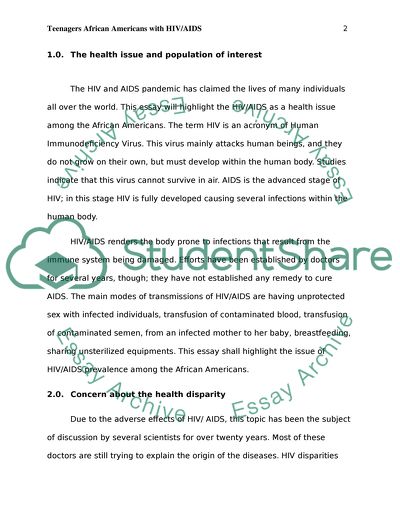Cite this document
(“African American Teenagers with HIV/AIDS Essay Example | Topics and Well Written Essays - 3750 words”, n.d.)
Retrieved from https://studentshare.org/nursing/1393227-tenages-african-american-with-hiv-aids
Retrieved from https://studentshare.org/nursing/1393227-tenages-african-american-with-hiv-aids
(African American Teenagers With HIV/AIDS Essay Example | Topics and Well Written Essays - 3750 Words)
https://studentshare.org/nursing/1393227-tenages-african-american-with-hiv-aids.
https://studentshare.org/nursing/1393227-tenages-african-american-with-hiv-aids.
“African American Teenagers With HIV/AIDS Essay Example | Topics and Well Written Essays - 3750 Words”, n.d. https://studentshare.org/nursing/1393227-tenages-african-american-with-hiv-aids.


